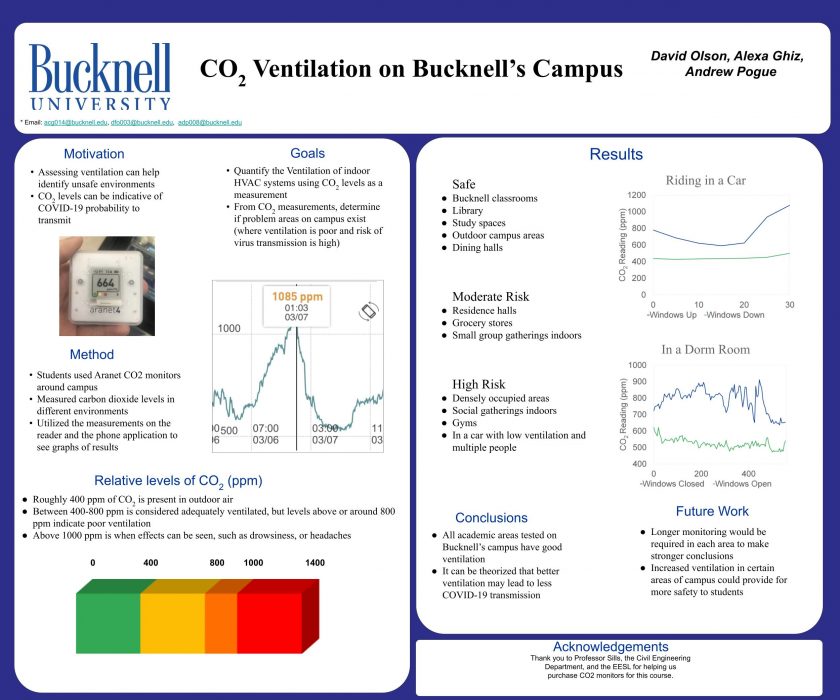Author:
Alexa Ghiz
Co-Authors:
David Olson, Andrew Pogue
Institution:
Bucknell
Abstract
Carbon dioxide monitors have been used by Professor Sills’ Sustainable Design course to provide information about CO2 levels in different environments on and off of Bucknell’s campus. Carbon dioxide levels can be representative of ventilation in a given area, but also should be examined with caution because they can be affected by other factors. Measuring ventilation is important because of the way that airborne viruses spread through aerosol particles. This is especially important on Bucknell’s campus as ventilation readings can give an indication on the level of risk for spreading COVID-19. The main findings through measuring the carbon dioxide on campus was that ventilation in campus settings was generally pretty good. This is specifically apparent in classrooms, study spaces, and dining halls. Dorm rooms and residential spaces generally had less ventilation and higher CO2 levels compared to educational spaces on campus. This result broadly explains the importance of letting students have the ability to be in-person for class and other campus activities. This result may also explain that the spread of COVID-19 may happen more often in residential spaces. These results could provide insight to potential policy changes in the coming years.
